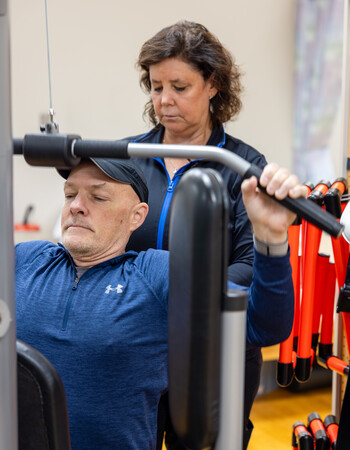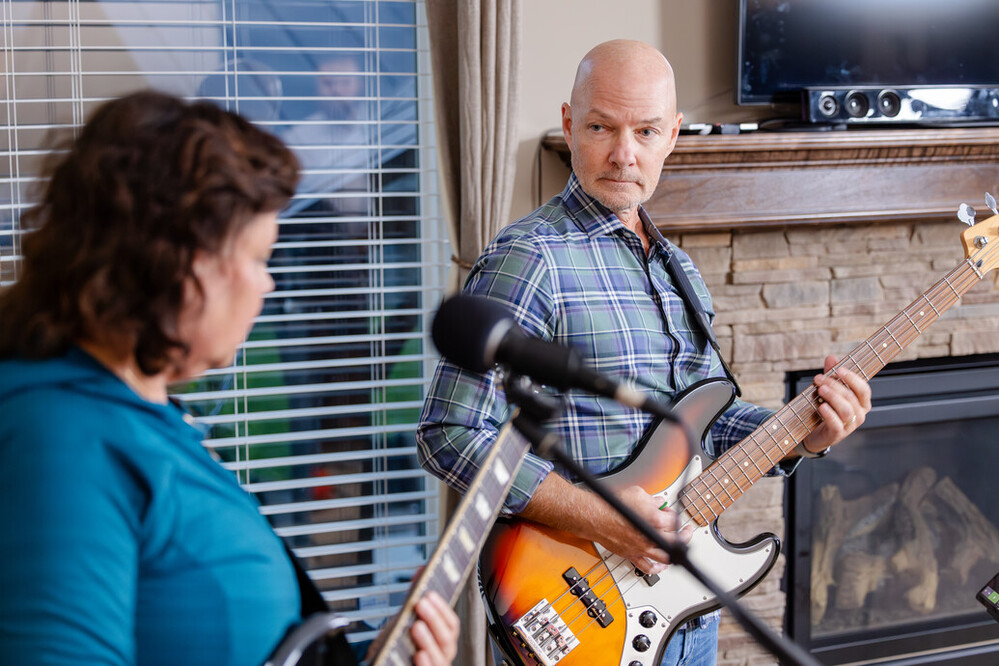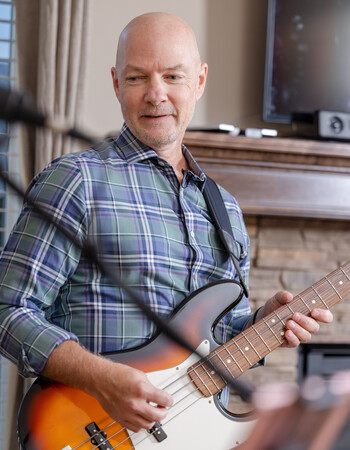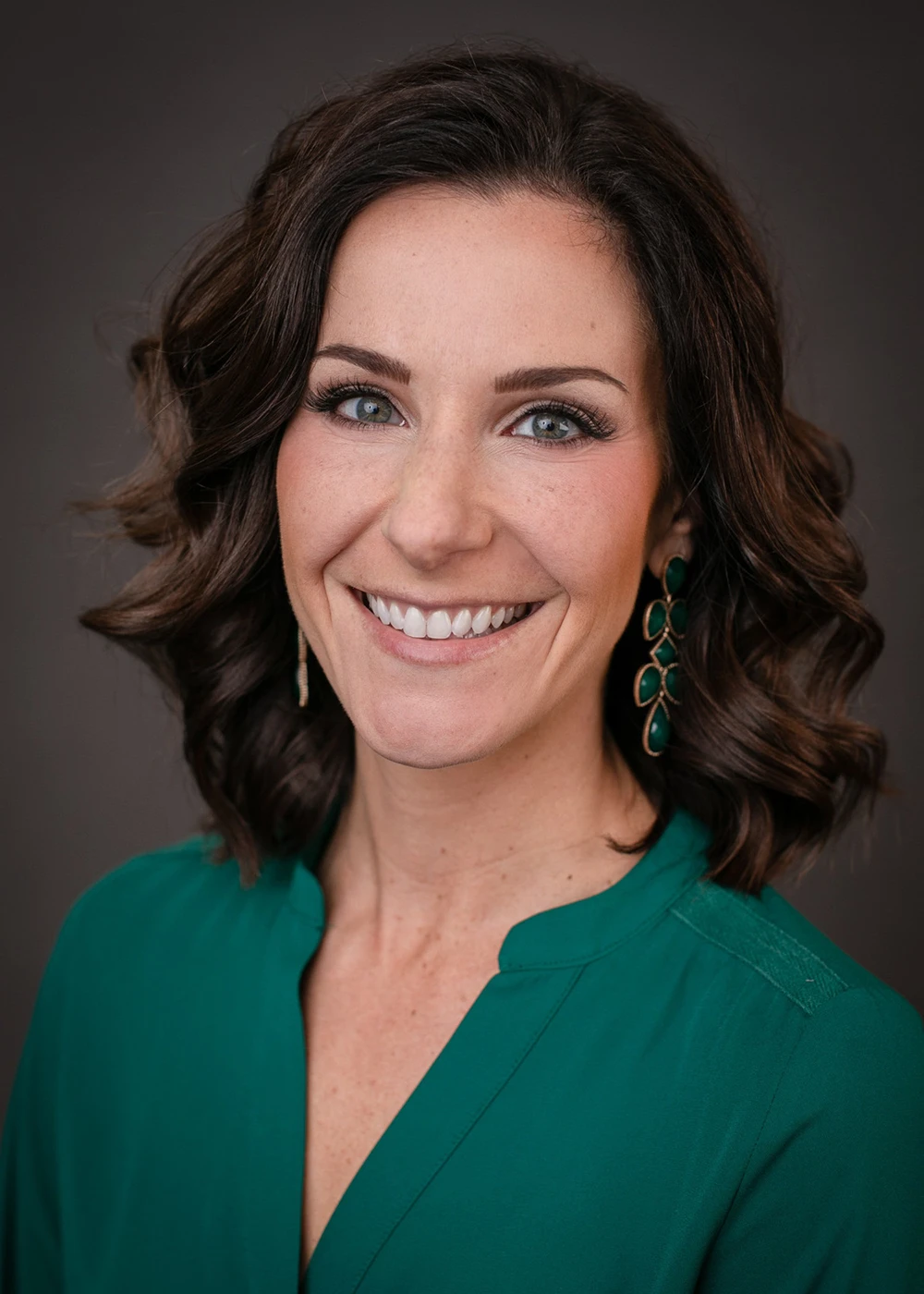





The Meaning of Care Magazine
‘Therapy of a Different Kind’ Transforms Tonsil Cancer Survivor’s Outlook on Life
Published: Dec. 20, 2023It was a homework assignment he didn’t expect to receive at the age of 57.
But when Mike Morgan, now 59, was tasked with adding some bass guitar chords to a song written by his physical therapist, “he dove right in,” said Shannon Seeley, PT, who largely works with oncology patients at Methodist Hospital.
“I didn’t even know if he would do it – if he would buy into it or not,” Seeley said. “But I’m telling you, he went with it and took it way beyond my expectations. I mean, he really did some stuff with it.”
“Her music completely resonated with me,” Mike said.
Far from standard cancer care, it was exactly what the survivor needed – to help pull himself out of the depression he was sinking into and get his mind on something that “made him tick,” Seeley said.
From COVID to Cancer
Mike contracted COVID-19 early in the pandemic – June 2020. He recovered well with minimal symptoms but couldn’t seem to shake the lingering fatigue, headaches and “just feeling off.”
By making an appointment with his Methodist primary care team, he hoped to find some relief. Instead, he was given reason to worry about a strange lump in his neck – something that had recently appeared, but also something that Mike assumed was related to his bout with COVID-19 and would eventually go away.
A biopsy with Methodist head and neck surgical oncologist Robert Lindau, MD, revealed stage 1 tonsil cancer.
“All the blood rushed out of my head,” Mike said. “It was literally that sinking feeling that you hear people describe. Just disbelief. Because there’s no cancer in my family. I was stunned.”
“And something that should have been an easily treated cancer with a high cure rate quickly turned into a lot of complications,” Dr. Lindau said.
Physical and Mental Decline
Mike’s treatment began with a tonsillectomy in September 2020 – when his surgical team removed a large portion of his throat, requiring a grafting procedure to then patch the area with tissue from his cheek.
He underwent a second surgery, which unveiled that not only had cancer spread to his lymph nodes, but it was also seeping out of those nodes and growing into several nerves and veins in his neck.
He required chemotherapy and radiation therapy, which were eventually followed by physical therapy in January 2021.
“When I met Mike, he was in a lot of pain,” Seeley said. “He had lost function in his shoulder. He was battling trismus – or lockjaw – so he could hardly open his mouth. He was losing weight quickly despite being on a feeding tube. He was very weak. He didn’t look well – at all.”
And his mental health was in worse shape.
“I remember taking a photo of myself when I was in the worst pain and darkest place of my life,” Mike said. “I wanted to remember that nothing would feel worse than what I was experiencing in that moment.”

Mike was desperate to feel like himself again, but he didn’t seem to be getting there with physical therapy.
“Usually when you see a physical therapist, they print off all these papers of exercises to do at home,” he said. “But there really was no playbook for what I had. It just didn’t seem like Shannon was making quick enough progress. I didn’t see the point.”
“Patient compliance is a big hurdle for physical therapists,” Seeley said. “We’re often asking patients to do things that are really challenging and sometimes painful. If they don’t have something motivating them or a goal to carry them through the hard work, they give up and never see improvement. I could just see Mike giving up. I could see anybody wanting to give up in his situation.”
A Musical Approach
Seeley got creative.
She spent her twice-a-week sessions with Mike really getting to know him and learned that he was once a spinning instructor, triathlete, marathoner and weightlifter. So, she started giving him tailored exercises that made him feel like he was getting a quality workout – like he was still the athlete he had always been.
During those workouts, Mike began to slowly let down his guard. Eventually, Seeley learned that, like herself, Mike is also a musician – he taught himself how to play guitar when he was young. And after he nailed Seeley’s request to create bass music for a song she had recently written, Seeley’s light bulb went on.
“That was my in,” she said. “But, really, for the first year, we would just send music back and forth online,” she said.
“Even still,” Mike said, “I started looking forward to my next therapy session – just to talk music with her.”
So, would playing together benefit her patient even more? Seeley thought it might.
The patient-therapist duo started getting together every Sunday to play – Shannon on lead guitar and vocals, and Mike on bass – often inviting their spouses to serve as an audience. It all transpired at a time when Seeley “was kind of in her own funk, too,” Mike said.
“Like Mike, I used to be an athlete,” Seeley said. “But after three knee surgeries and one back surgery, I’ve realized I can’t do that stuff anymore. This has given me something else to be passionate about – something other than work. And that probably wouldn’t have happened, or at least not to the same level, if I didn’t have someone else counting on me.”

“It’s a creative outlet,” Mike said. “A sense of accomplishment. It’s something I can focus on other than the cancer – something I really enjoy. But it’s also a bonding thing – therapy of a different kind.”
Living for the Song
In spring of 2023, Mike did something he hadn’t done in years – a pull-up at his favorite gym. He credits his consistent physical therapy schedule and a lot of personal grit.

“That was months and months of work,” Mike said. “I never thought I’d get back to that point again. I still can’t believe it.”
But just as it felt like he was returning to “Mike again,” he received news in August that his cancer had returned – and it was no longer curable.
“Telling him that he had metastatic disease – the way he handled that was something else,” Dr. Lindau said. “His response was, ‘OK, just tell me what I need to do.’ Not only that, he now wants to be an advocate for other patients. To me, that tells me he understands what’s going on here. He realizes that life still needs to be lived. And he wants to help others see that, too.”
“Look, the alternative to going through this is death,” Mike said. “I know that sounds extreme, but it’s true. It’s kind of like music. It can be challenging, but if you throw in the towel, you miss out on the song – my family, my friends. I have a new granddaughter, now. I have so much to live for.”
“It’s all about living your best life while you can,” said Seeley, who still meets Mike every Sunday morning for a jam session. “And he inspires me every day to do just that.”
More Resources
- Read more from the winter 2023 issue of The Meaning of Care Magazine.
- Learn more about cancer care at Methodist.
- Learn more about physical therapy services at Methodist.


